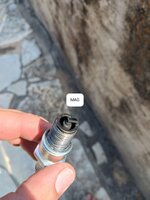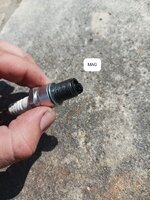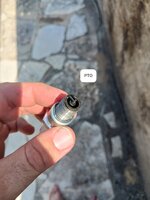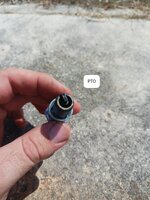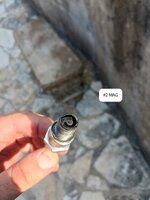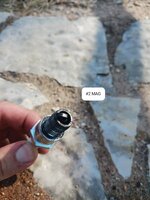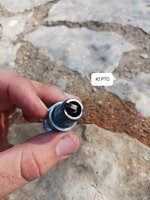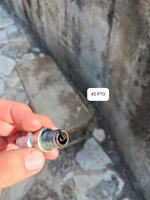Plug read at idle will really do nothing.
If it idles fine and transitions from idle well then youa re good.
Never change more than 1/8 turn at a time. Always go richer first.
Here it the proper procedure to set the LS screws, they only affect idle.
"The idle drop test is how I have been tuning a carburetors low speed and pilot circuits since the early
1980's. The only thing that has changed is the the adjustment after the engine dies or wants to die.
On early Mikuni BN carbs the adjustment is 1/4 turn. But when the CDK II was released in 1986, the
adjustment was increased to 1/2 turn. The same 1/2 turn adjustment works for the Mikuni SBN, SBN-i
carbs. The reason for this change was the manufactures started using an fuel-air pilot circuit on the
CDK II, SBN, SBN-i carbs. The BN has a traditional low speed circuit.
A very common loss of peak performance is caused by the low speed (pilot) screw set richer than
necessary.
With the idle drop test you can determine if the low jet and spring is the correct size. On the the CDK II,
SBN, SBN-i carbs, the low jet, spring, seat diameter, and low speed (pilot) screw are all inter-connected.
Using the idle drop test rules, I was able to develop reverse jetting with a very high pop-off, using seats
from 1.2 to 2.0 and pop-off 32, 55, 76 psi. It is the style of jetting I prefer for all SBN, SBN-i carbs from
increasing the performance of stock engines to full race engines. But it does not work on carbs with
modified low speed by-pass holes (like Novi).
The only type of carbs I would not use this test on is the Novi, or any carb with a modified return line
circuit. Otherwise it works on all diaphragm carbs including weed whackers.
Idle drop test
Perform the idle drop test in a test tank, a trailer, or secured to the shore line. Set the pilot screws set to
some arbitrary rich setting. For example: 1 ½ turns out, and warm up the engine. Set the idle to a low
rpm. A good rule of thumb: You should be able to hold your hand behind the pump. If the pump pushes
your hand away, the idle is too fast.
Slowly turn the pilot screw(s) inward (clockwise) until the engine wants to die, or quits. Make a note of
how many turns it takes to bottom the screw(s). It will be easier to shut the engine off (when the engine acts
like it is about to lean out and die) yourself and make the adjustments, and document turns to bottom or
closed. Next, reset the low speed (pilot) screws to the setting where the engine died, and turn the low speed
(pilot) screw(s) outwards an additional ½ turn. Restart the engine, and recheck the idle. If the engine rpm
increases, and you can no longer hold your hand behind the pump, I recommend readjusting the idle and
the pilot screw again.
Next, test the acceleration and make note of any strange behavior or tenancy to quit on deceleration. Shut
the engine off and turn the pilot screw inwards until they lightly bottom. Make note of the number of turns
in. I count screw settings in half turns, use whatever method to count screw settings that suits you. Then write
the settings down and keep it for latter, and reset the screw(s) position.
I normally strive to achieve ¾ turns out on the pilot screw, and if the engine begins to die at ¼ turns out,
I consider that perfect. If the engine is still running and the pilot screws are closed, this is a sign the low
speed jets are too rich. In this case I would recommend leaning the low jet 2 sizes. If the pilot screw position
is at 1 turn out, that is a sign the low speed jet is too lean. Another rule of thumb is to use ¼ turn = 1 pilot jet
size. In this case I would recommend caution and only change the jet two sizes richer, and then retest."
Bill M.





